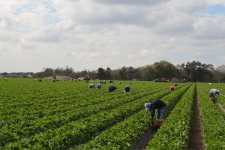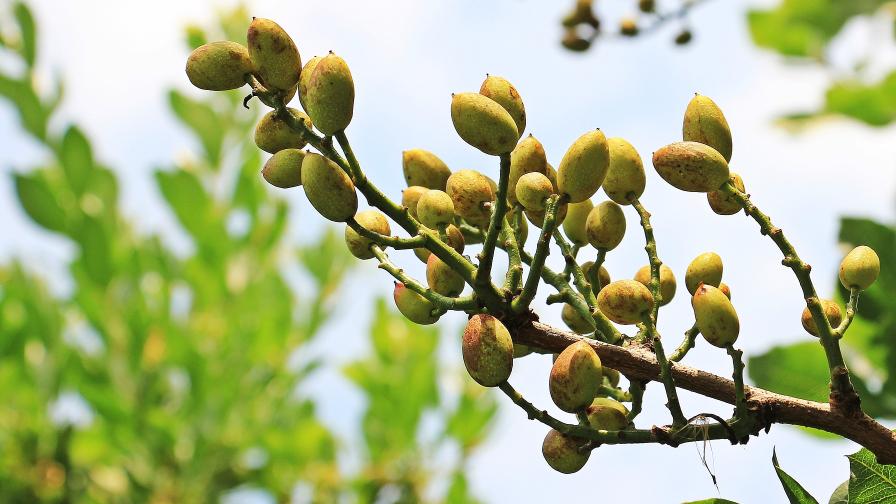New Push For Immigration Reform

Could this be the moment that real immigration reform occurs? That has been the question on the minds of ag interests since President Obama was sworn in January.
After election losses, Republicans seem more inclined to negotiate a change in immigration policy. Over the years, agriculture has been at the mercy of government whims related to immigration enforcement. All along, growers have pleaded for a reliable and stable program to bring in labor to tend to and harvest their crops.
Ganging Up On Change
Indicating a bipartisan approach, the group of eight Senators (Marco Rubio R-FL; John McCain R-AZ; Lindsey Graham, R-SC; Jeff Flake R-AZ; Chuck Schumer, D-NY; Robert Menendez, D-NJ; Michael Bennet, D-CO; and Richard Durbin, D-IL) are leading the charge for reform in Washington.
At presstime, no specific legislation had been offered on reform. The reform proposal has broadly promised action on protecting the border to gain favor with the Republicans and a pathway to citizenship to suit the Democrats.
Somewhere in between, ag groups are pushing for a viable worker visa program. These organizations have formed the Agriculture Workforce Coalition (AWC) to present a united front. Congressional leaders supporting a deal seem inclined for a worker program. However, President Obama gave reason for pause in statements leaving out the need for a worker program. Pundits say he is trying to respond to pressure from labor unions.
Florida Grower asked Lisa Lochridge, director of public affairs for FFVA, what some of the major goals of the AWC are as critical immigration reform debate ensues. The association is a member of the AWC.
What are some specific reforms the AWC is looking for?
Lochridge: The AWC advocates legislative reform that includes an agricultural visa program to give farmers, ranchers, and nurseries access to a stable, legal workforce into the future, as well as an adjustment in legal status for veteran agricultural workers now in the U.S. who are undocumented. Together, the components cover the current workforce and provide for a future supply of employees when those who are working now transition out of agriculture.
The visa program addresses the need for a future workforce. It has two options in order to give employers and workers flexibility and choice. One option is market-based, meaning an employee would have the choice to move from employer to employer — which is very typical in agriculture — without a contract to take advantage of job opportunities during an 11-month period. Companies would have to be registered with USDA, and there would be no limit on the number of times a worker could secure an 11-month visa.
The second option is for workers and employers who like the commitment and predictability of a contract. An employee could work for a company for a fixed period of time with a 12-month visa that could be renewed. Workers would have to return home for at least 30 days during a three-year period.
For the agricultural workforce in the country now, the coalition supports an adjustment in legal status. Employees would have to work for a required number of days each year in agriculture for several years. Once that obligation is satisfied, they would receive permanent legal status and could work in whatever industry they choose.
Will the group seek to replace or improve H-2A?
Lochridge: The new visa program envisioned by the coalition would eventually replace the H-2A program. It’s the right solution because it gives farmers the assurance that they will have workers to harvest their crops, and it gives employment flexibility to workers.
The H-2A program is broken beyond the point of fixing. It’s extremely difficult to use, and it’s a costly bureaucratic nightmare — especially for those just starting out in the program. It only helps a very small portion of agriculture, providing less than 4% of the hired workers that farmers need. It’s also unreliable: A 2010 study showed that farmers lost more than $320 million because they couldn’t get the number of workers when they needed them.
Given the President’s priority on immigration reform and movement in Congress, do we have a better chance than in the past for reform?
Lochridge: Agriculture is in a good place right now with regard to immigration reform. In fact, we would argue that now may be the best opportunity we’ve had in more than a decade to realize real reform with a solution for agriculture. It still may be a tough issue politically, but the winds have shifted since the presidential election, where we saw the Hispanic electorate make a big difference. Many in Congress understand that and are willing to entertain the notion of finally making something happen.
Do you have allies in Congress that will work with AWC to be sure that ag is heard in the debate?
Lochridge: Perhaps one of the most encouraging developments is that we no longer have to continue making a case for agriculture when we talk to members of Congress. For the most part, they have heard us and understand that our workforce is unique and must be considered in any debate about immigration reform. Fortunately, Florida Sen. Marco Rubio has taken a leadership role and is working hard on sensible reform. He has a clear picture of the need for a stable, legal workforce for agriculture.









